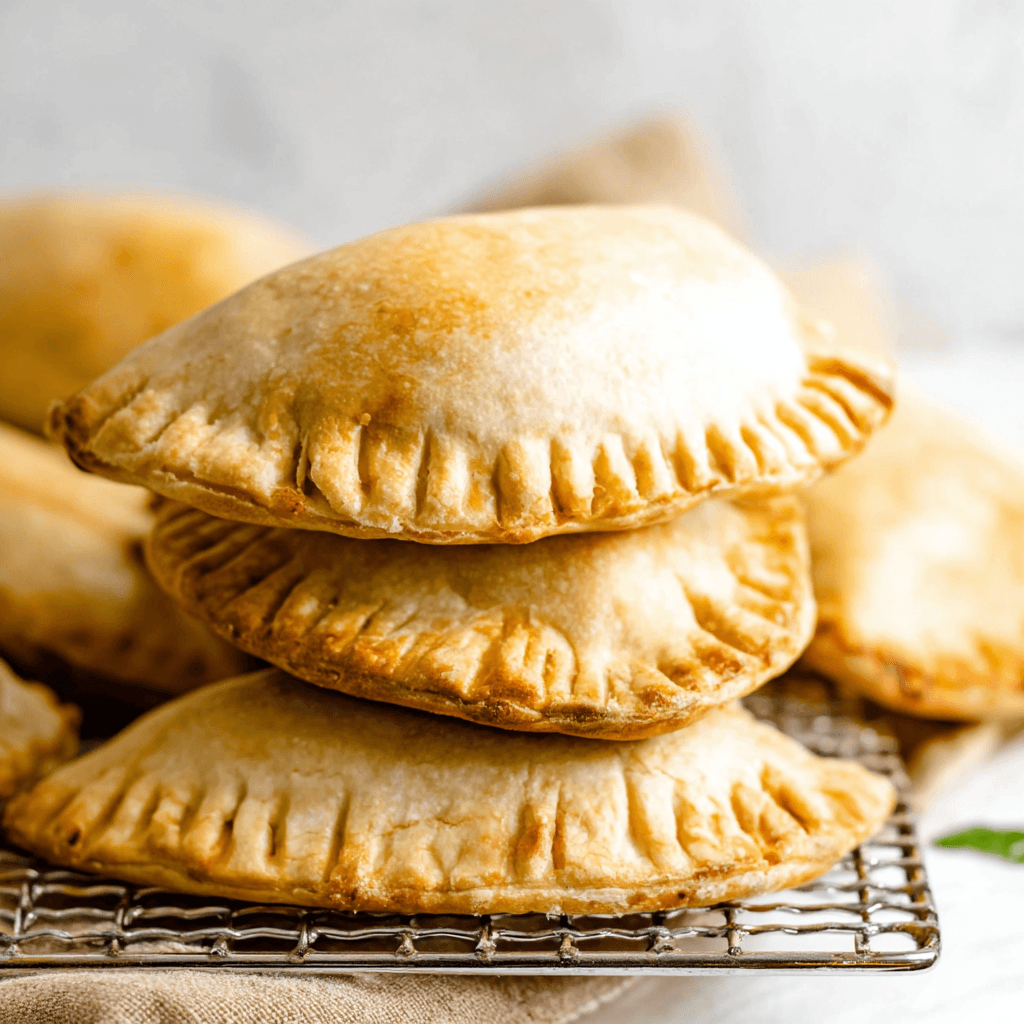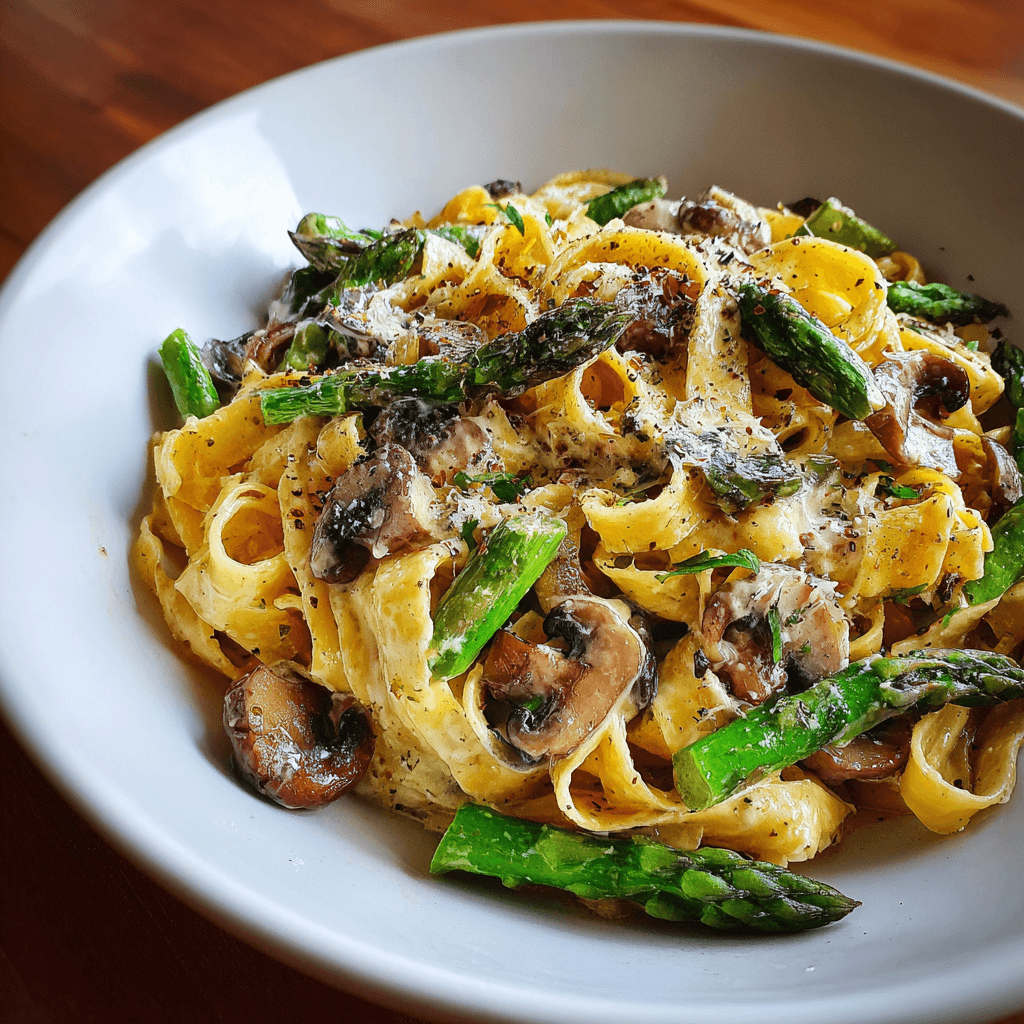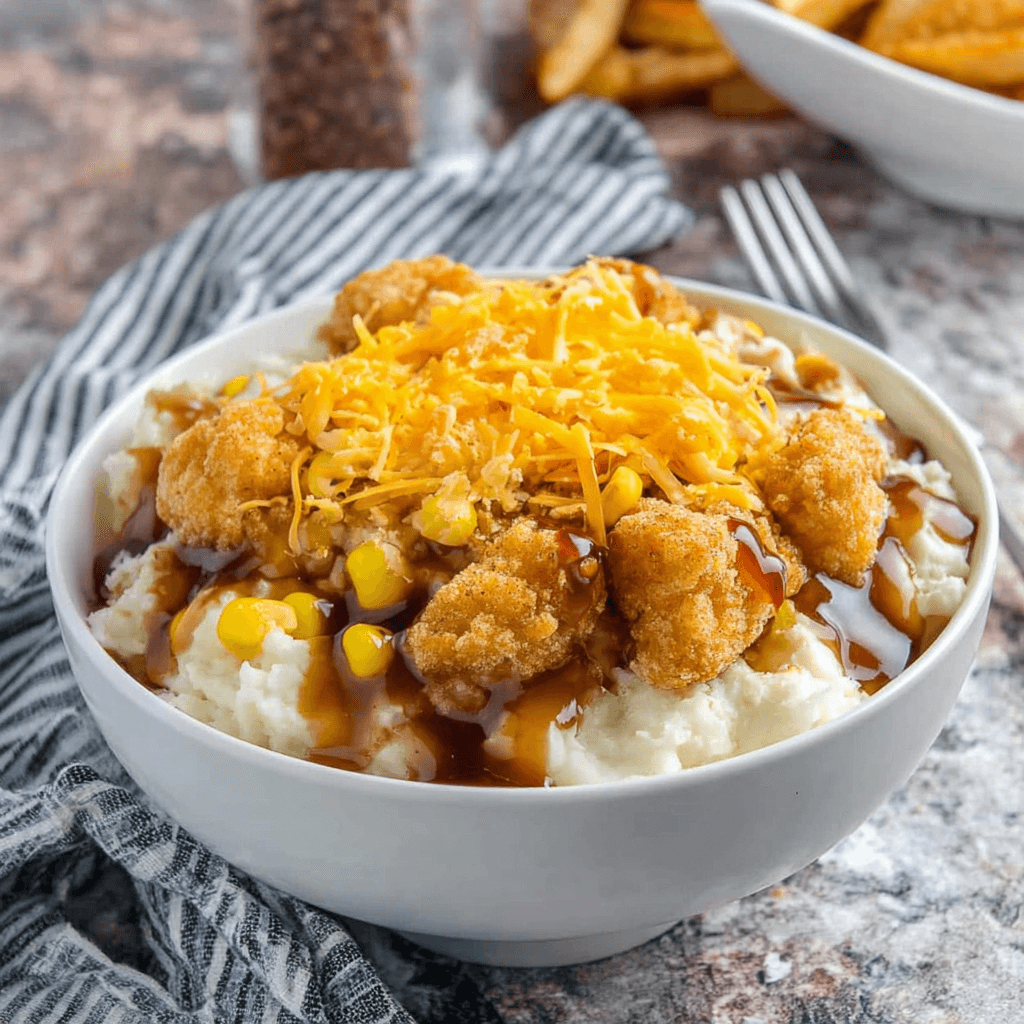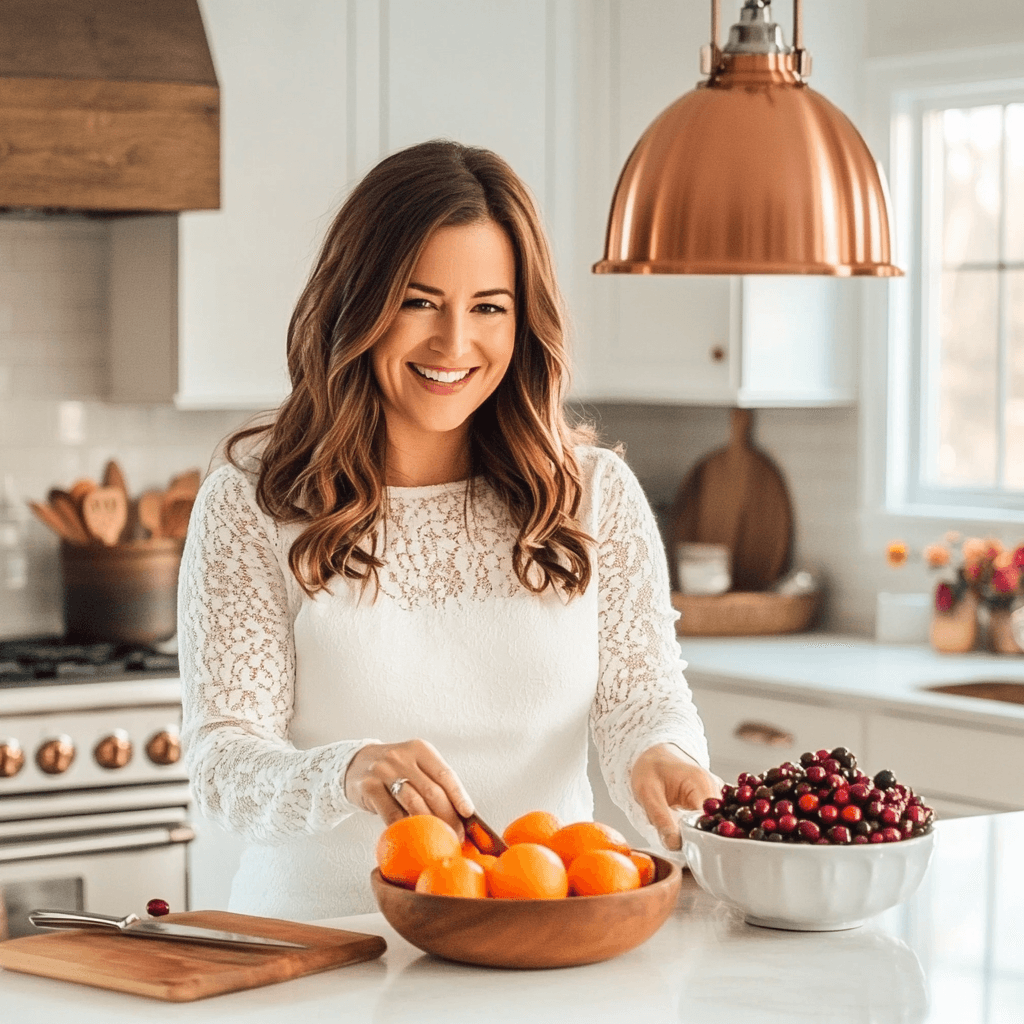Table of Contents
Introduction to Grandma’s White Cake Recipe
What is a White Cake?
Grandma’s White Cake Recipe is a timeless dessert known for its light and fluffy texture, subtle sweetness, and signature snowy-white color. Traditionally made with egg whites and clear vanilla extract, this classic cake is the perfect base for weddings, birthdays, and other special occasions. Its simplicity allows it to pair beautifully with a variety of frostings and fillings, from buttercream to fresh fruit.
A Recipe Passed Down Through Generations
Grandma’s White Cake Recipe is more than just a dessert; it’s a cherished family tradition. This recipe has been lovingly handed down through generations, preserving the flavors and techniques that make it uniquely special. Each bite is a reminder of family gatherings, heartfelt celebrations, and the warmth of home. With its perfect balance of elegance and nostalgia, Grandma’s White Cake is a culinary heirloom that brings joy to every table.
Why This Recipe Stands Out
Classic Simplicity
Grandma’s White Cake is a testament to the beauty of simplicity. Made with basic pantry staples and straightforward steps, this recipe focuses on delivering pure, unpretentious flavors. The fluffy texture and delicate taste are achieved without the need for complex techniques or fancy ingredients, making it accessible to bakers of all skill levels. It’s a reminder that sometimes, the simplest recipes are the most satisfying.
Perfect for Any Occasion
Whether it’s a wedding, a birthday, or a casual family dinner, this white cake is the perfect centerpiece for any celebration. Its neutral flavor profile pairs well with countless frostings, toppings, and decorations, allowing it to adapt to any theme or preference. From a minimalist, frosted finish to an extravagant layered creation, Grandma’s White Cake rises to every occasion with elegance and charm.
Ingredients List
Core Ingredients
- All-Purpose Flour: The foundation for the cake’s structure.
- Granulated Sugar: Adds sweetness and enhances the tender texture.
- Egg Whites: Essential for achieving the cake’s light and airy consistency.
- Milk: Provides moisture and helps bind the ingredients.
- Unsalted Butter: Adds richness and flavor to the cake.
- Baking Powder: Ensures the cake rises properly.
- Clear Vanilla Extract: Maintains the white color while adding a hint of flavor.
- Salt: Balances the sweetness and enhances overall flavor.
Optional Add-ins for Variations
- Almond Extract: For a subtle nutty flavor.
- Lemon Zest: Adds a refreshing citrus twist.
- Food Coloring: To customize the cake for themed events.
- Coconut Flakes: For added texture and flavor.
- Sprinkles: For a fun and colorful touch, perfect for birthdays.
Kitchen Tools You Need
Essential Baking Tools
- Mixing Bowls: For combining ingredients efficiently.
- Electric Mixer: To ensure the batter is smooth and well-aerated.
- Measuring Cups and Spoons: For precise measurements.
- Rubber Spatula: For scraping down the sides of the bowl.
- 8-inch Cake Pans: To bake the layers evenly.
- Cooling Rack: Ensures the cake cools without becoming soggy.
Optional Tools for Convenience
- Cake Leveler: For perfectly even layers.
- Parchment Paper: To prevent sticking and make cleanup easier.
- Offset Spatula: For smooth and precise frosting application.
- Stand Mixer: For hands-free mixing of larger batches.
- Decorating Tools: Piping bags and tips for adding a decorative finish.
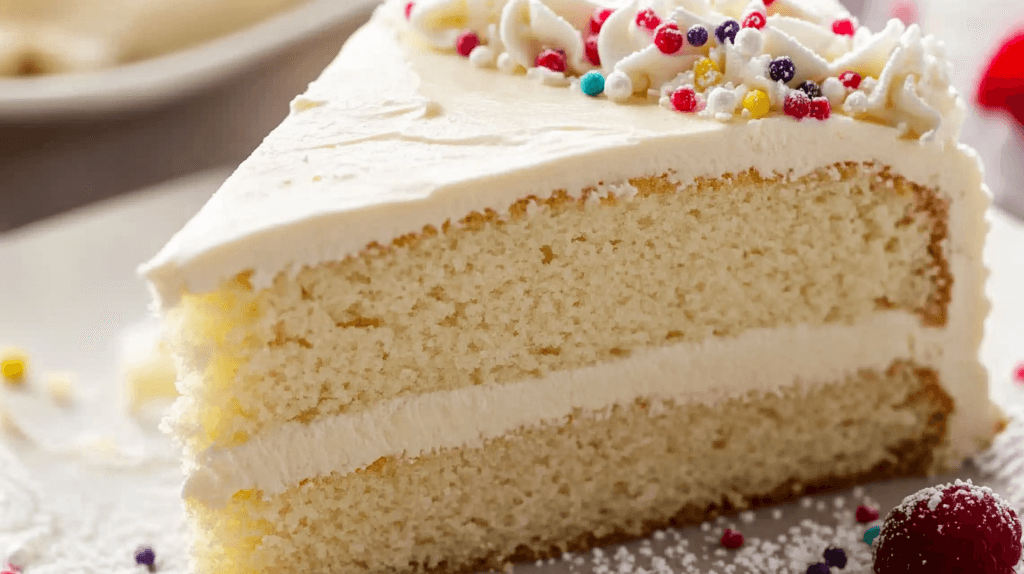
Step-by-Step Preparation
Preparing the Cake Batter
- Preheat the Oven: Set your oven to 350°F (175°C) and prepare two 8-inch cake pans by greasing them and lining the bottoms with parchment paper.
- Mix Dry Ingredients: In a medium bowl, whisk together the all-purpose flour, baking powder, and salt.
- Cream Butter and Sugar: In a large bowl, use an electric mixer to beat the unsalted butter and sugar until light and fluffy.
- Add Egg Whites: Gradually add the egg whites, one at a time, mixing well after each addition.
- Incorporate Milk and Vanilla: Mix the milk and clear vanilla extract in a small bowl. Alternate adding the dry ingredients and milk mixture to the butter mixture, starting and ending with the dry ingredients. Mix until just combined, being careful not to overmix.
Baking the Layers
- Divide the Batter: Pour the batter evenly into the prepared cake pans, smoothing the tops with a spatula.
- Bake: Place the pans in the preheated oven and bake for 25-30 minutes, or until a toothpick inserted into the center comes out clean.
- Cool the Cakes: Let the cakes cool in the pans for 10 minutes, then transfer them to a wire rack to cool completely before frosting.
Frosting and Decorating
- Prepare the Frosting: Choose your preferred frosting (e.g., buttercream or cream cheese) and beat it until smooth and spreadable.
- Assemble the Cake: Place one cake layer on a serving plate and spread a layer of frosting evenly on top. Add the second layer and frost the top and sides of the cake.
- Decorate: Use an offset spatula or piping tools to decorate the cake as desired. Add sprinkles, fruits, or other toppings for a finishing touch.
Tips for a Perfect White Cake
Ensuring a Light and Fluffy Texture
- Room Temperature Ingredients: Ensure the butter, milk, and egg whites are at room temperature for better blending.
- Whip Thoroughly: Beat the butter and sugar until they’re light and fluffy, which helps create a tender crumb.
- Avoid Overmixing: Once the flour is added, mix just until the ingredients are combined to prevent a dense texture.
Common Mistakes to Avoid
- Using Whole Eggs: Stick to egg whites only to maintain the cake’s pristine white color.
- Skipping Parchment Paper: Without parchment, the cakes may stick to the pans, making removal tricky.
- Opening the Oven Too Early: Avoid opening the oven door during baking, as this can cause the cake to sink.
- Not Allowing Proper Cooling: Frosting a warm cake can cause the frosting to melt and slide off. Let the layers cool completely before assembling.
Variations of the Recipe
Almond-Flavored White Cake
- Ingredient Addition: Replace half of the vanilla extract with almond extract for a subtle, nutty flavor.
- Frosting Pairing: Pair with a rich almond buttercream or a marzipan layer for added depth.
- Decoration Ideas: Top with slivered almonds or a dusting of powdered sugar for a simple yet elegant finish.
Lemon-Infused White Cake
- Ingredient Addition: Add 1-2 tablespoons of freshly grated lemon zest to the batter and replace some of the milk with freshly squeezed lemon juice.
- Frosting Pairing: Frost with a tangy lemon cream cheese frosting or a light lemon glaze.
- Decoration Ideas: Garnish with candied lemon slices, fresh berries, or edible flowers for a refreshing look.
Serving Suggestions
Best Pairings
- Beverages: Serve with a cup of hot tea, coffee, or a glass of sparkling lemonade for a perfect complement.
- Toppings: Enhance the flavors with fresh berries, a drizzle of fruit compote, or a dollop of whipped cream.
- Sides: Pair with a scoop of vanilla or berry sorbet for a refreshing contrast.
Pair this cake with the Strawberry Muffin Recipe for a cohesive dessert spread.
Presentation Tips
- Layered Elegance: Decorate the sides of the cake with piped frosting or textured patterns using a cake comb.
- Themed Decorations: Adapt the cake’s decoration to the occasion—add edible glitter for a festive celebration or pastel accents for a baby shower.
- Serving Style: Slice the cake into even portions and serve on elegant dessert plates. Garnish each slice with a fresh mint leaf or a berry for a professional touch.
Storage Instructions
Keeping Your Cake Fresh
- Room Temperature: Store your frosted white cake in an airtight container at room temperature for up to 2 days if the frosting is not dairy-based.
- Refrigeration: For cakes with cream cheese or buttercream frosting, cover tightly and refrigerate for up to 5 days. Allow the cake to come to room temperature before serving for the best flavor and texture.
- Cover Properly: Wrap the cake in plastic wrap or place it in a cake dome to prevent it from drying out.
Freezing for Longer Shelf Life
- Unfrosted Cake Layers: Wrap cooled cake layers individually in plastic wrap and then in aluminum foil. Freeze for up to 3 months.
- Frosted Cake: Place the frosted cake in the freezer until the frosting hardens, then wrap it in plastic wrap and foil. Freeze for up to 3 months. Thaw overnight in the refrigerator before serving.
- Portion Freezing: Freeze individual slices wrapped in plastic wrap for convenient single servings.
Nutritional Information
Calories and Macronutrients per Serving (Approximate)
- Serving Size: One slice (1/12 of a standard 8-inch cake)
- Calories: 280-320 (varies depending on frosting and add-ins)
- Protein: 4-6 grams
- Fat: 12-15 grams
- Carbohydrates: 40-45 grams
- Sugar: 25-30 grams
- Fiber: 0-1 gram
Note: These values are approximate and will vary based on specific ingredients and portion sizes. Adjustments for variations like almond or lemon-infused cakes may slightly alter the nutritional profile.
Frequently Asked Questions
What is the difference between a white cake and a vanilla cake?
The primary difference lies in the ingredients. White cake uses only egg whites, which give it its characteristic pale color and delicate texture. Vanilla cake, on the other hand, often includes whole eggs, which contribute to a richer flavor and a slightly denser texture. Both cakes feature vanilla as a flavoring, but white cake has a more subtle flavor and lighter appearance.
What is the secret to super moist cake?
The key to a moist cake is balancing the right amount of fat, liquid, and mixing. Use ingredients like butter or oil, which help retain moisture, and do not overmix the batter, as this can lead to a dense cake. Additionally, avoid overbaking by checking for doneness a few minutes before the recommended baking time.
Is it cheaper to make cake from scratch or box mix?
While box mixes are often marketed as budget-friendly, making a cake from scratch can be just as economical if you already have staple ingredients like flour, sugar, and baking powder at home. Scratch-made cakes also allow for better control over quality and flavor, making them a worthwhile investment for special occasions.
Why do you only use egg whites in white cake?
Egg whites are used to maintain the cake’s pristine white color and light, fluffy texture. The yolks, while flavorful, would add a yellow tint and make the cake slightly denser. Using egg whites ensures the delicate structure that defines a classic white cake.
What happens if you use egg whites instead of whole eggs?
Replacing whole eggs with egg whites will result in a lighter and fluffier texture, but the cake may lose some richness since the yolks contain fat and flavor. To compensate, you can add a little extra butter or a tablespoon of oil to maintain moisture and richness.
How much liquid egg whites equals 3 eggs?
Approximately 6 tablespoons of liquid egg whites (or 3/4 cup) are equivalent to the whites of 3 large eggs. Always check the packaging of liquid egg whites for specific measurements, as they can vary slightly by brand.
Conclusion
Why This Recipe Deserves a Spot in Your Recipe Box
Grandma’s White Cake is more than just a dessert—it’s a celebration of tradition, simplicity, and versatility. Its light, fluffy texture and delicate flavor make it a timeless choice for any occasion, from weddings to everyday indulgence. The recipe’s adaptability allows you to create countless variations to suit your taste, while its straightforward preparation ensures success for bakers of all levels.
Whether you’re honoring family traditions or simply looking for the perfect cake to wow your guests, this recipe is a must-have in your collection. With each bite, you’ll savor not only the delicious flavors but also the heartwarming legacy it represents. Try the Chocolate Pound Cake Recipe for a diverse flavor profile. Let Grandma’s White Cake bring sweetness to your table and memories that last a lifetime.


